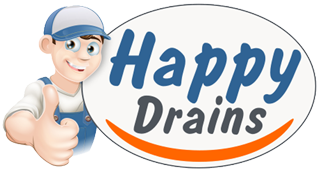With the #HinchArmy battering the cleaning shelves of every discount store and supermarket to get that last bottle of Zoflora or the final bottle of pine gel to make those sinks sparkle and those drains flow, we’ve decided to take a look at the method, decide if it works, or if it’s doing more harm than good.
The Mrs Hinch Ritual For Cleaning Your Sink and Plug Holes
First step, clear the entire sink and wipe it down with some form of pine spray or gel disinfectant.
Step two, dump loads of baking soda into the drain before pouring white vinegar spray over the top of it.
Step three, after 15 minutes have passed, pour boiling water over that plughole, washing all remains of baking soda or vinegar away and clear our that drain.
Last step, final spray with antibacterial spray or stainless steel cleaner.
Without sounding too much like MC Hammer, let’s stop, and break it down.
First step is entirely fine for cleaning your sinks, the less dirt and grime around the sink basin the better. Clearing up food debris, dust, hair or anything else that are potential threats to your drains should definitely be wiped out of that sink before it reaching the plughole.
Step two is a great step for anything that has already beat you to the plughole before step one. Baking soda will attach itself to all crevices, food, grime, or build up, once it is met with vinegar the reaction process that takes place helps remove anything in its path. The reaction between baking soda and vinegar is in fact rather chemical, baking soda (sodium bicarbonate) and vinegar (dilute acetic acid) begins to bubble, and yields carbon dioxide plus water, sodium ion, and acetate ion, this combined reaction begins to dislodge any food, dirt or grime trapped in the drain, anything not dislodged will be soft enough for step three.
Step three is a recommendation from Happy Drains too, guess we’re part of #HinchArmy then? The process of pouring boiling water into your drain will help remove any dirt, fat or oil, however, with the chemical reaction in step two helping to either soften or dislodge your drains prior to this step, the boiling water just acts as a final clearance of the drain.
Last step is purely for aesthetics, however, if you’ve done the work making the hidden parts clean then it wouldn’t hurt to show it’s clean on the outside.
Is all this really good for my drains?
The chemical reaction of step two is really the only potential harm to your drains, however, with it not producing enough harmful elements this reaction should not cause the pipes any damage. If you’re worried about potential issues to your pipes you can find out which pipes are best for you here.
All in all, great work Mrs Hinch!
I’ve tried the Mrs Hinch Ritual but my Drains are Blocked?
If you would like further help or advice on the ideal materials for your waste and water pipes, we can help. For more information, get in touch with the Happy Drains team via our contact page or by calling 0800 849 8099.


